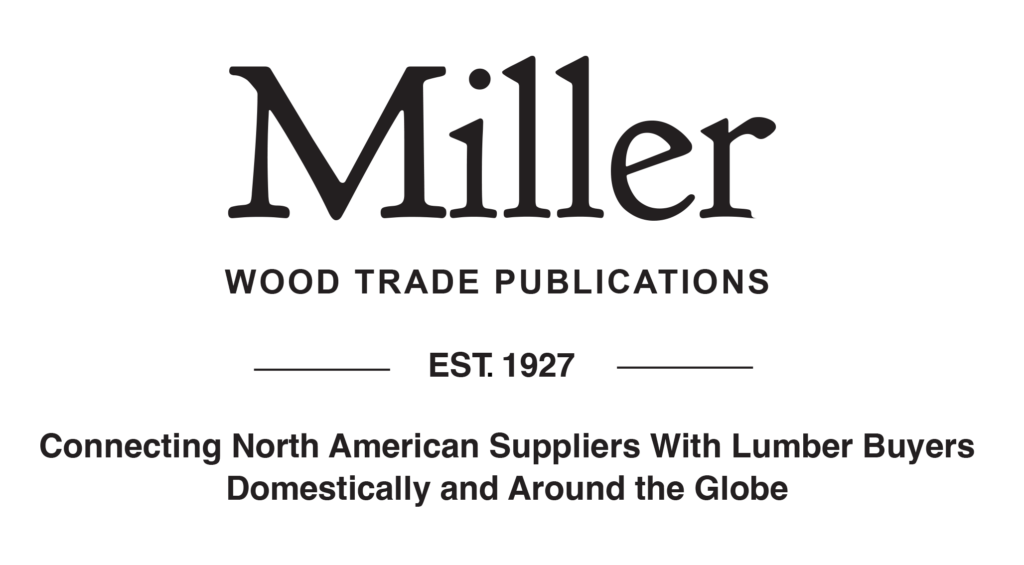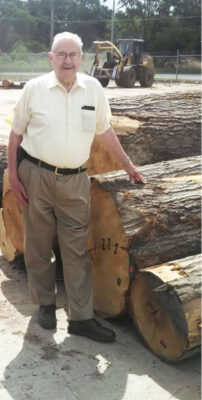A Fungus Among Us In The Northeast?
Uncertainty in the market causes a summer slump while lumber sources struggle with Chinese and Canadian customers.
A lumber representative in West Virginia reported that, at the time of this writing, the market is “Okay because it usually slows down this time of year anyway. The tariffs caused some grief but that seems to be easing up.”
It was a “little worse” six months ago and has been flat. “Nobody will commit too far out, so that makes things complicated. We’re just living on orders from two days ahead maybe. There isn’t much inventory out there. Years ago, the people that made money in this business, when the lumber was cheap and the market was soft, would buy all they could stack in their yards and then they had it when the market picked up but nobody is that brave anymore.”
He commented on a potential fungus affecting Red Oak but is yet to verify any of the information. “I was talking to a customer who told me that the Chinese weren’t going to allow the importing of Red Oak anymore because there’s some kind of fungus, so the Red Oak FAS price jumped up. We’ve always had top-grade Red Oak in this part of the world and half of the Red Oak production ends up in China, so that threw a wrench into everything.”
In addition to Red Oak, which they have been cutting in 5/4 lately for C-container truck and trailer customers, they carry White Oak, Cherry, Hard and Soft Maple and a “little bit” of Birch, Basswood and Hickory. Despite Red Oak being their “main item,” Poplar is their best seller while Cherry is “out of style,” and White Oak “fell off a little bit but is still very good.”
In addition to truck and trailer flooring companies, their other customers consist of residential flooring businesses and distribution yards. He circled back to the Chinese market, focusing on how those customers will “buy lumber but not logs, which will hurt our business. They’ve got the furniture plants over there, so they don’t want to buy logs but want to cut all the 5/4, 6/4, 8/4 and 10/4. All they want to buy is 4/4 over here.”
Trucking seems to be “a little better. Some of it is due to local problems with another manufacturer.” He also believes that, at the time of this writing, “People are out trying to get some loose ends tied before the holidays shut everything down.”
One source reported a rumor his customer shared about a potential fungus affecting Red Oak.
As for employment, he doesn’t “have enough applicants to where I can choose the ones I want.”
A lumber representative in Maine also reported that the market is “flat” in his area, and he attributed this to a “lack of demand and market uncertainty” but it is not worse than six months ago.
They handle Red Oak, Hard and Soft Maple, Ash and Yellow Birch. “Red Oak is our number one species and we work with all the grades,” he said.
He noted that his company sells to “very few wholesalers and brokers. The bulk of it is end users and distribution yards. We do export and there’s a lot of volatility now. The distribution yards are still doing fine but the mix might change a little bit- they’re heavier toward Poplar and White Oak but they’re still buying other species as well just in smaller volumes. The end users expected to see a bump in the first quarter of their business and that hasn’t really materialized. We’re not going to see a lot of growth this year.”
Labor seems to be “more stable now than it was a year ago,” he said.
In Pennsylvania, a lumber source stated, “The change in Canadian currency over the last year has been causing problems. Their value against the dollar has slid and when our products cost that much more money and because of the tariffs, the Canadians stop buying our products. I figured our Canadian business was about 80 percent off from 2023 to 2024. This year, it’s almost nonexistent.”
It is worse than six months ago.
They sell Red Oak, Ash, Cherry and Hard and Soft Maple but they handle “small amounts” of Poplar and White Oak. Ash is their strongest species and even though it “pretty much sells itself” when they cut it, he worries that he will “not have Ash after this year.” Red Oak is expected to overtake Ash as their strongest specie. They offer “everything from 3/4 to 16/4” and some 2-inch thickness in Red Oak and Ash.
Their main customers are domestic, custom moulding and millwork businesses. They’re also “selling to a blend of manufacturers and distribution yards.”
He has reported struggles with his Chinese customers due to the lack of promised reimbursements for the tariffs.
“Last time there was a tariff, it was 25 percent, and we split it with our customers. The tough part for us this time, is that the customers we split the tariffs with years ago were fully reimbursed. This time, the Chinese were told by their government that they weren’t going to be reimbursed which is slowing business down. It dropped the prices of the two main species that I tend to carry.”
Finding younger employees is difficult for them and they have added a lot of automation.









